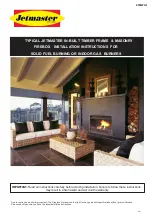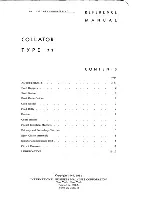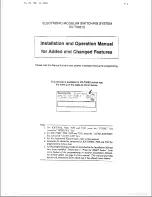
page 6
prying up a chunk of wood as you tap the two ends into the
fret slot with a hammer
(7)
. Once the two fret ends are
embedded in the fret slot, the fret is unlikely to tip as you
hammer it home.
Hammer back and forth across the fretboard in short, sharp
blows. Use the face of the hammer, not an edge, and try not
to hit the fretboard on either side of a fret. The fret tang, with
its diamond-shaped barbs, embeds itself into the finger-
board as the fret straightens end-to-end from the hammer
blows.
To see that the frets are seated, use your fingernail to tug at
their overhanging ends. Loose frets can be firmed up with
superglue run into one end of the fret slot. Keep the fret-
board tilted at an angle to keep the glue from getting onto
the fretboard. Or, you can tape off the fretboard on each side
of a slot and run a bead of Titebond into the slot before ham-
mering in the fret. If you use Titebond, let the frets dry
overnight before nipping and filing their ends.
When the frets are firm and the glue is dry, nip them almost
flush with the fingerboard edge. Do not nip right up to the
edge, or the nippers will pull into the fingerboard and possi-
bly unseat a fret end.
Use a smooth mill file to flush the fret ends to the edge of the
fingerboard. Then use the same file, held at an angle, to file
the fret end bevels
(8)
. Choose a bevel that suits you — per-
haps between 45° and 60°. Stop when the file hits the wood.
Blunt the top edges of the fingerboard on the bass and tre-
ble sides with a single-edge razor blade
(9)
. Later, when you
glue on the fingerboard with a rubber band clamp, there will
be no sharp edge to break the rubber band.
The fingerboard is now ready to be glued to the neck.
However, you must first prepare the body to accept the neck,
since you will be fitting the neck to the body before the fin-
gerboard is glued on.
7.
Keep the wire from tipping and prying up a chunk of wood as
you tap the two ends into the fret slot with a hammer.
8.
Use a smooth mill file, held at an angle, to bevel the fret ends.
9.
Blunt the top edges of the fingerboard on the bass and treble
sides with a single-edge razor blade.








































